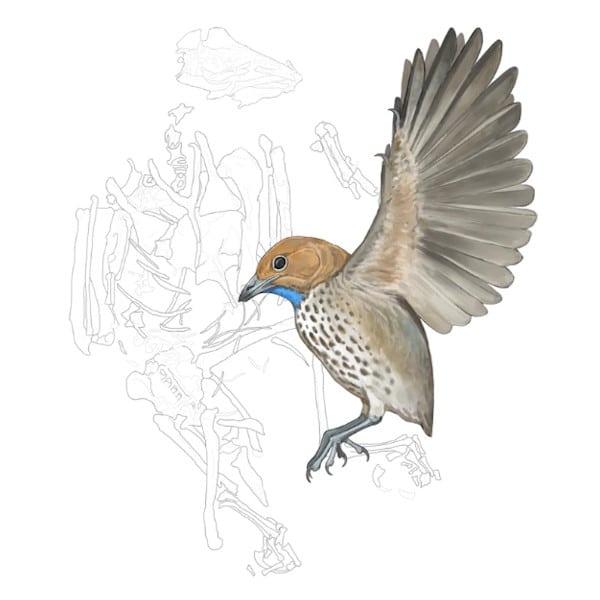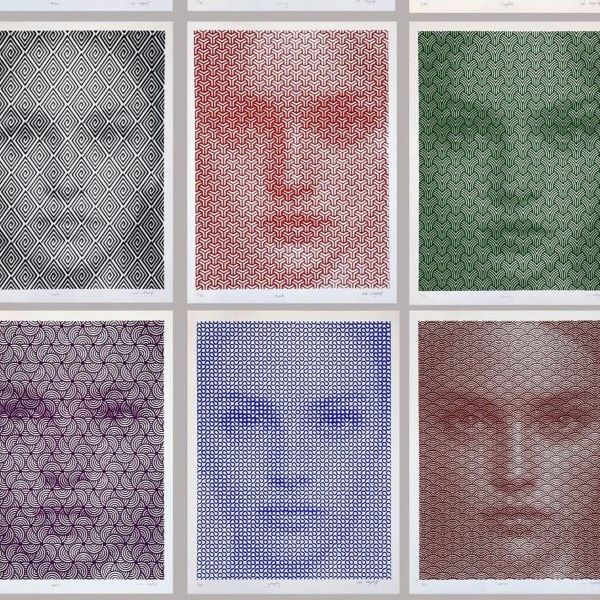Lilac Chaser Illusion
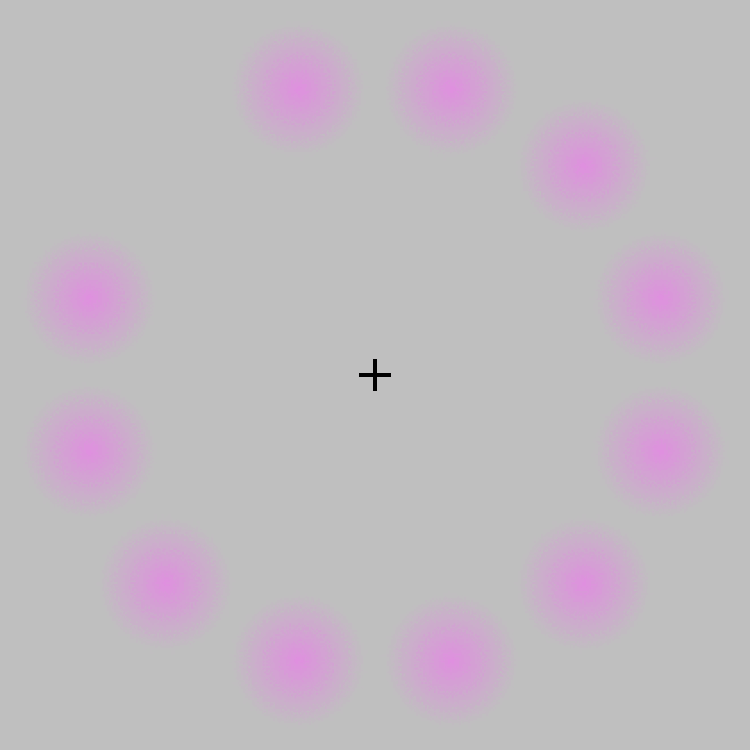
(GIF: TotoBaggins at the English language Wikipedia [GFDL or CC-BY-SA-3.0], via Wikimedia Commons)
It's thanks to the phi phenomenon that we perceive the motion of the disks. This effect is when objects viewed in rapid success created the perception of continuous motion. The green disk appears due to negative afterimage effect. An afterimage is when we continue to see a stimulus after it's disappeared. A negative afterimage is when we see the opposite color of the stimulus, so the green replaces the lilac as the cones of our retina become tired. The effect is stronger when the gaze is held still, which is why the green disk appears after several seconds focused on the same spot. Lastly, the fading of the lilac disks all together is due to Troxler's fading, which is when a blurry stimulus fades into the background if our gaze is held still for long enough. Over time, the afterimage of the grey gap completely replaces the lilac disks, leaving just the green afterimage and grey background.
Ebbinghaus Illusion

(Photo: Phrood~commonswiki assumed (based on copyright claims). [Public domain], via Wikimedia Commons)
Checker Shadow Illusion
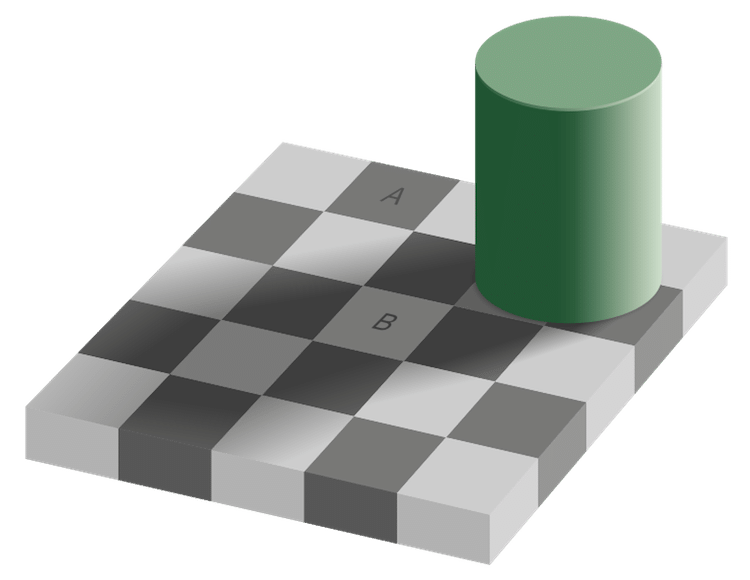
(Photo: Edward H. Adelson [Copyrighted free use], via Wikimedia Commons)
Want to see another color mind-blow like #TheDress happen in real-time? http://t.co/tsb5Otkoa9 pic.twitter.com/YHRI4e1SWc
— Kyle Hill (@Sci_Phile) February 27, 2015
Scintillating Grid Illusion
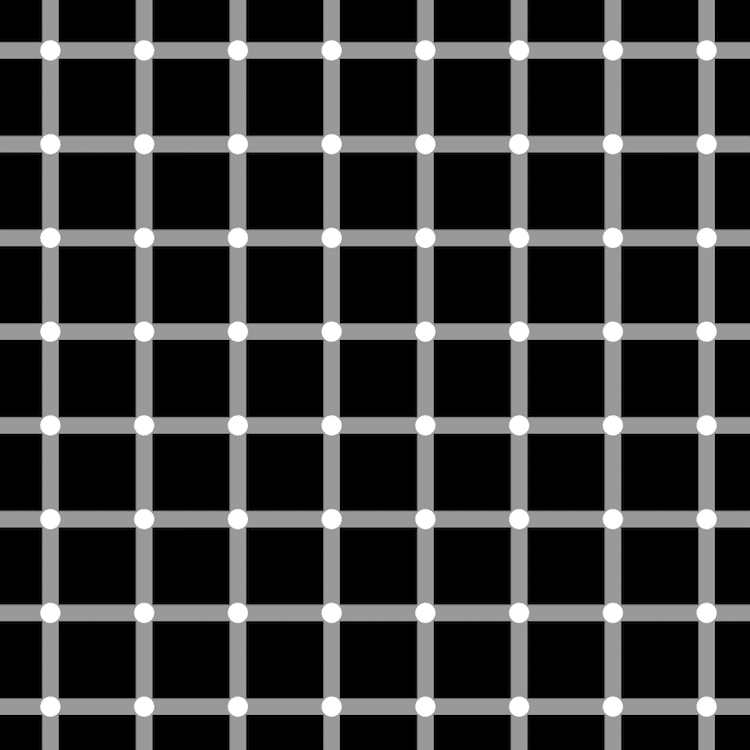
(Photo: Tó campos1 (Own work) [Public domain], via Wikimedia Commons)
Interestingly, the illusion is created only when the viewer's eyes are not staring at a fixed point, and if the viewer is too close or far from the image, the dark dots disappear. One explanation for the illusion is lateral inhibition, which increases the contrast and sharpness of a visual response. Check out the below video to learn more about how lateral inhibition works in creating illusions.
Related Articles:
Researchers Discover New Optical Illusion Called ‘Curvature Blindness’
Optical Illusion of Two “Different” Photos Are Actually Exactly the Same
Spectacular Illusion Makes Flat Walls Appear to Be a Swirling Vortex
Mind-blowingly Mesmerizing Optical Illusions by Akiyoshi Kitaoka

















































































